Mini Transat: Proto podium filled
Published on November 15th, 2017
(November 15, 2017; Day 14) – There have been a succession of arrivals as the final leg of the Mini-Transat La Boulangère comes to a close, but for the overwhelming majority of the racers, there are still some days to go before they reach their holy grail and the celebratory rum punch of the finish, synonymous with being part of the clan of sailors who’ve done the Mini.
Following on from Ian Lipinski (Griffon.fr) winning proto finish yesterday, Jörg Riechers (Lilienthal), Simon Koster (Eight Cube Sersa) and Andrea Fornaro (Sideral) are now in the dock. In the production class, Erwan Le Draoulec (Emile Henry) is about to become the youngest ever winner of the Mini-Transat.
Production boats: all to play for in the race for the podium
There are currently four boats within a 20-mile radius astern of leader Erwan Le Draoulec. Though Clarisse Crémer (TBS) is managing to hold onto her second place, hot on her heels is Tanguy Bouroullec (Kerhis Cerfrance) who, should he fail in his bid to secure second place in the overall ranking, may still make the podium if he manages to make up his 2h15mn deficit in relation to Benoît Sineau (Cachaça II).
Suffice to say that the last few miles are likely to be extremely tense and the slightest error may well prove very costly. Clarisse Crémer, who appeared to be slightly below par for some days, now seems to have the bit between the teeth again since the fleet bunched up again.
That said, in an easing breeze which is gradually veering as it shifts a little further south, the slightest separation may well increase in scale to the detriment or the delight of the others. In principle, this latest wind shift looks set to favour those furthest north, who might well benefit from a better angle to make the channel between Martinique and Sainte-Lucie.
Quotes from the boats at the finish:
Jörg Riechers (Lilienthal), 2nd place: “It’s natural that Ian’s won. He put together the perfect project: he bought the best boat, he trained to ensure he was ready and he’s talented; you can’t do better than that. You could almost write a manual: how I won the Mini-Transat.
“Mine is an anarchistic, hippy project. I’ve come along with a new boat, I didn’t train and I’ve finished second. This hasn’t been an easy transatlantic race: in upwards of twenty knots of breeze, I had to take the helm as the autopilot couldn’t keep up. I didn’t get enough sleep; around two to three hours a night.
“The boat wasn’t originally designed for this configuration as she was supposed to have foils. In the end, I told myself that in the seas you encounter in the Mini-Transat, foils are not a solution. The Mini is too small to sail with foils.
“My southerly option really was a considered choice. Each time I climbed up to the north it was stormy, further south I encountered more stable conditions. What’s clear is that the new designs with their scow bows perform far better. However, I still believe that, given the way I put this project together, finishing second is almost a miracle. It’s worth a Vendée Globe or a Route du Rhum.”
Simon Koster (Eight Cube Sersa), 3rd place: “This third place suits me to a T. It’s pretty much in line with the goal I set myself. After the first leg, the game remained wide open, even though there were a few people in front.
“As per usual, the Atlantic crossing reshuffled the cards. Already, there was Ian (Lipinski), who could only battle against himself. Our boats are too similar and I have a slight speed deficit in relation to him. I would have needed a different boat like the 800 (Erwan Le Mené’s boat) to stand a chance of worrying him.
“With regards the foils, we’re really going to have to rack our brains to analyse the pros and cons in terms of the weight estimate and the use you get out of foils. We know it will be impossible to have a boat that flies all the time, so the aim would be to have foils that aren’t a disadvantage when they’re not in use.
“As for scow bows, we should have been doing this for a long time. It’s impressive to see how powerful these boats are. There’s no longer any doubt about whether they work or not. For bigger boats, the only issue relates to coming up with fairly solid structures. Unfortunately, the big boat classes have their hands tied in this area.
“Fun? This is the most fun edition I’ve had. In 2013, it was very complicated with a race comprising a single leg. In 2015, it was a race against time. In this instance, I was ready and we had ideal conditions to boot. Some days it was so pleasant that I said to myself that the race could last another 2,000 miles.”
Position report on 15 November at 15:00 UTC
Prototypes
1 Ian Lipinski (Griffon.fr) finished Nov. 14, 13d 00h 22mn 34s
2 Jorg Riechers (Lilienthal) finished on Nov. 15, 01h 12mn 46s (UTC)
3 Simon Koster (Eight Cube Sersa) finished on Nov. 15, 12h 04mn 10s (UTC)
4 Andrea Fornaro (Sideral) finished on Nov. 15, 13h 58mn 20s (UTC)
5 Keni Piperol (Région Guadeloupe) 64.9 miles
Production boats
1 Erwan Le Draoulec (Emile Henry) 72.5 miles from the finish
2 Clarisse Crémer (TBS) 94 miles behind the leader
3 Tanguy Bouroullec (Kerhis Cerfrance) 94.4 miles behind the leader
4 Benoît Sineau (Cachaça 2) 107.2 miles behind the leader
5 Thomas Dolan (offshoresailing.fr) 114.5 miles behind the leader
Class news – Race news – Tracking – Facebook
Race Facts
· 21st edition
· 4,050 miles to cover between La Rochelle – Las Palmas in Gran Canaria and Le Marin (Martinique)
· 81 skippers at the start
· 10 women
· 11 nationalities
· 20 years: age of the youngest skipper in the race: Erwan Le Draoulec
· 62 years: age of the oldest skipper in the race: Fred Guérin
· 25 prototypes
· 56 production boats
· 66 rookies
· 15 ‘repeat offenders’
Background
With an overall length of 6.50m and a sail area pushed to the extreme at times, the Mini Class offers incredibly seaworthy boats. Subjected to rather draconian righting tests and equipped with reserve buoyancy making them unsinkable, the boats are capable of posting amazing performances in downwind conditions… most often to the detriment of comfort, which is rudimentary to say the least.
The Mini Transat has two legs to carry the fleet from La Rochelle, France to Martinique, West Indies. The leg from La Rochelle to Las Palmas de Gran Canaria is a perfect introduction to proceedings before taking the big transatlantic leap.
The first leg starts on October 1, with the fleet thrust into the Bay of Biscay which can be tricky to negotiate in autumn, while the dreaded rounding of Cape Finisterre on the north-west tip of Spain marks a kind of prequel to the descent along the coast of Portugal. Statistically, this section involves downwind conditions, often coloured by strong winds and heavy seas. Making landfall in the Canaries requires finesse and highly developed strategic know-how.
The second leg begins on November 1, with the solo sailors most often carried along by the trade wind in what tends to be a little over two weeks at sea on average. Due to a storm, the fleet is being routed south to Cape Verde before heading west. At this point, there’s no way out: en route to the West Indies, there are no ports of call. The sailors have to rely entirely upon themselves to make Martinique.
Source: Aurélie BARGAT | Effets Mer


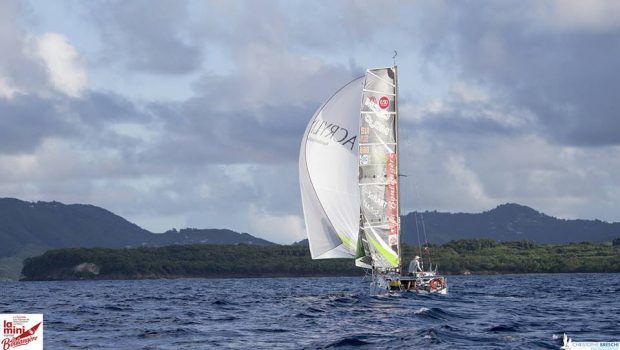

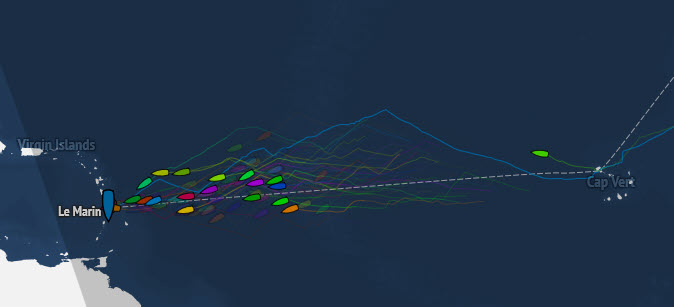
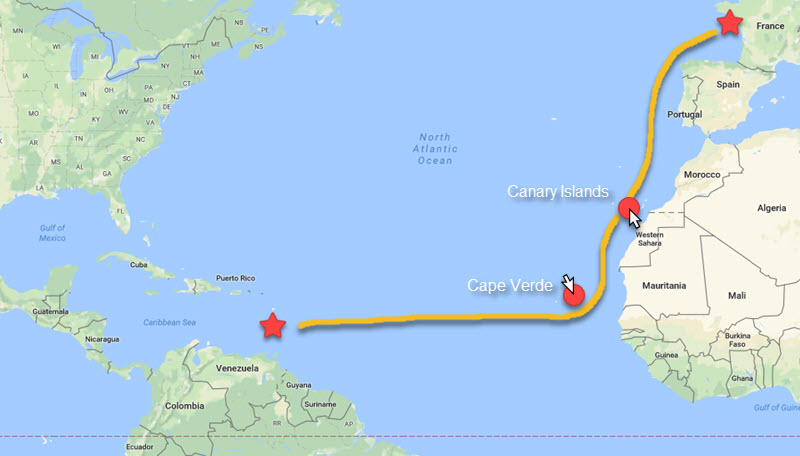


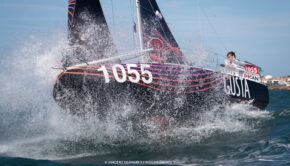
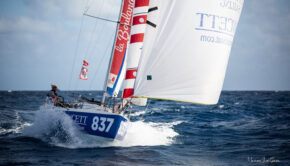
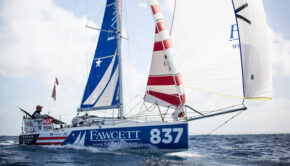
 We’ll keep your information safe.
We’ll keep your information safe.